Arizona boasts a rich tapestry of waterfowl, and in this exploration, we delve into the vibrant world of 16 ducks that call this southwestern state home.
Each species contributes to the intricate ecological balance of Arizona’s wetlands, rivers, and lakes, from the elegant American Wigeon to the striking Ruddy Duck.
Ducks play a crucial role in nutrient cycling, pest control, and the overall health of these aquatic habitats.
Join us on a journey to discover the diverse characteristics, habitats, and conservation status of these 16 remarkable duck species thriving amid the unique landscapes of Arizona.
Let’s unravel the stories of these feathered residents and appreciate their vital roles in the dynamic ecosystems of the Grand Canyon State. Stay sharp.
16 Ducks in Arizona
Arizona’s diverse ecosystems provide a rich tapestry for ducks, fostering a unique ecological balance.
Wetlands, lakes, and rivers serve as vital habitats, offering abundant food sources like aquatic plants, invertebrates, and small fish.
Ducks are crucial in controlling insect populations, aiding plant dispersal, and contributing to nutrient cycling.
Conservation efforts focus on preserving these habitats to ensure the continued well-being of duck species, recognizing their significance in maintaining ecological harmony in Arizona’s dynamic landscapes.
Explore the diverse avian tapestry of Arizona’s wetlands with a glimpse into the lives of captivating ducks.
From the elegant Ruddy Duck to the striking Common Goldeneye, each species brings its unique charm to the region.
1. American Wigeon
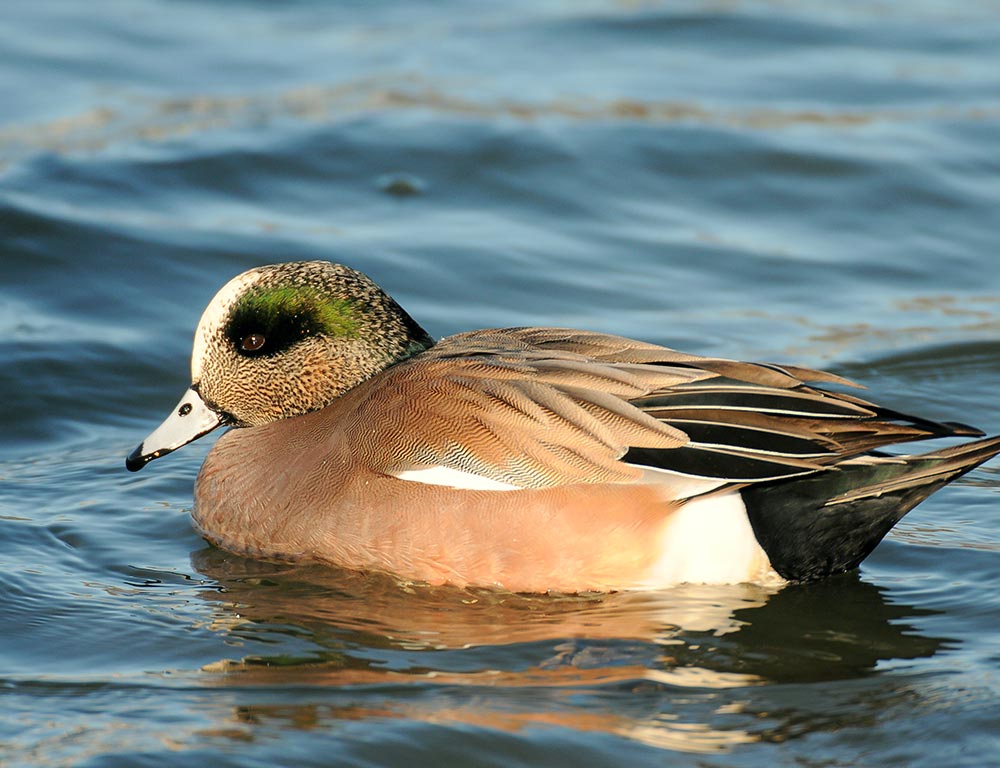
- Scientific Name: Mareca americana
- Size: 17-23 inches
- Weight: 1.5-2.5 pounds
- Wingspan: 2.1-2.3 feet
- Population: Abundant
- Life Span: 16 years
- Status: Least Concern
The American Wigeon, commonly found in Arizona, is a medium-sized dabbling duck recognized by its distinctive white crown and green eye stripe.
Their diet consists mainly of aquatic plants and invertebrates. These social birds are often seen in large flocks, especially during migration.
Their lifespan can reach up to 16 years, and they are currently categorized as a species of Least Concern.
2. Cinnamon Teal
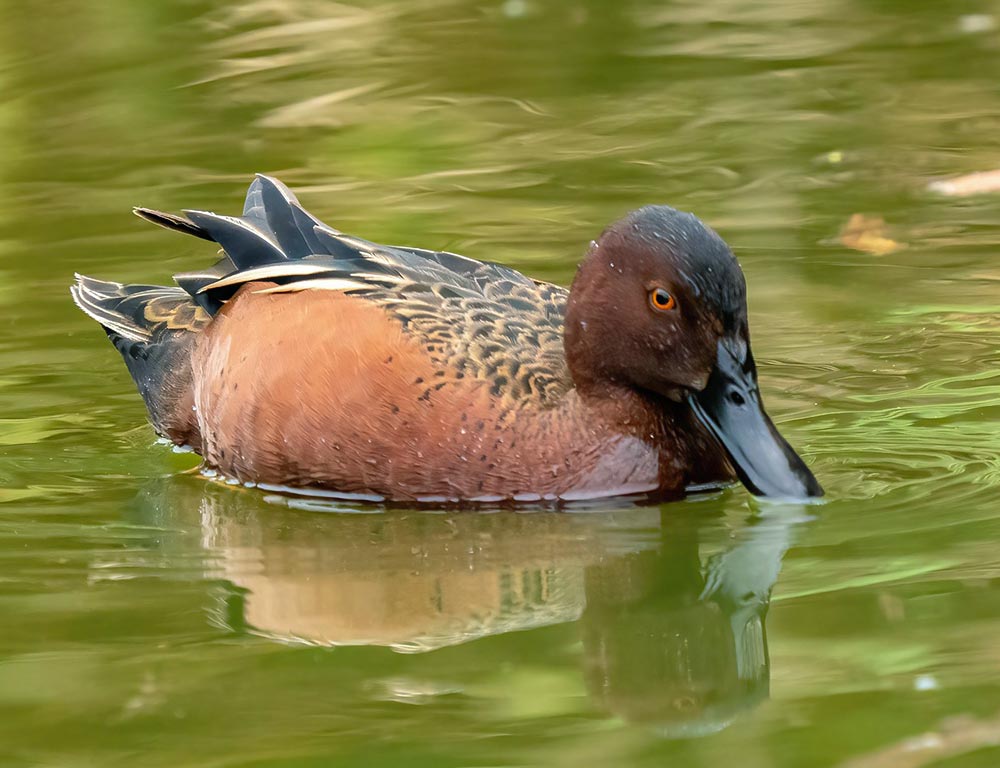
- Scientific Name: Anas cyanoptera
- Size: 16-18 inches
- Weight: 1-1.5 pounds
- Wingspan: 2.1-2.3 feet
- Population: Stable
- Life Span: 7-8 years
- Status: Least Concern
The Cinnamon Teal boasts striking cinnamon-colored plumage, with males being more vibrant than females.
These ducks are frequently observed in Arizona’s wetlands, feeding on seeds and aquatic invertebrates.
Known for their distinctive whistling calls, Cinnamon Teals form monogamous pairs during breeding season. With a life expectancy of 7-8 years, they are currently labeled as a species of Least Concern.
3. Gadwall
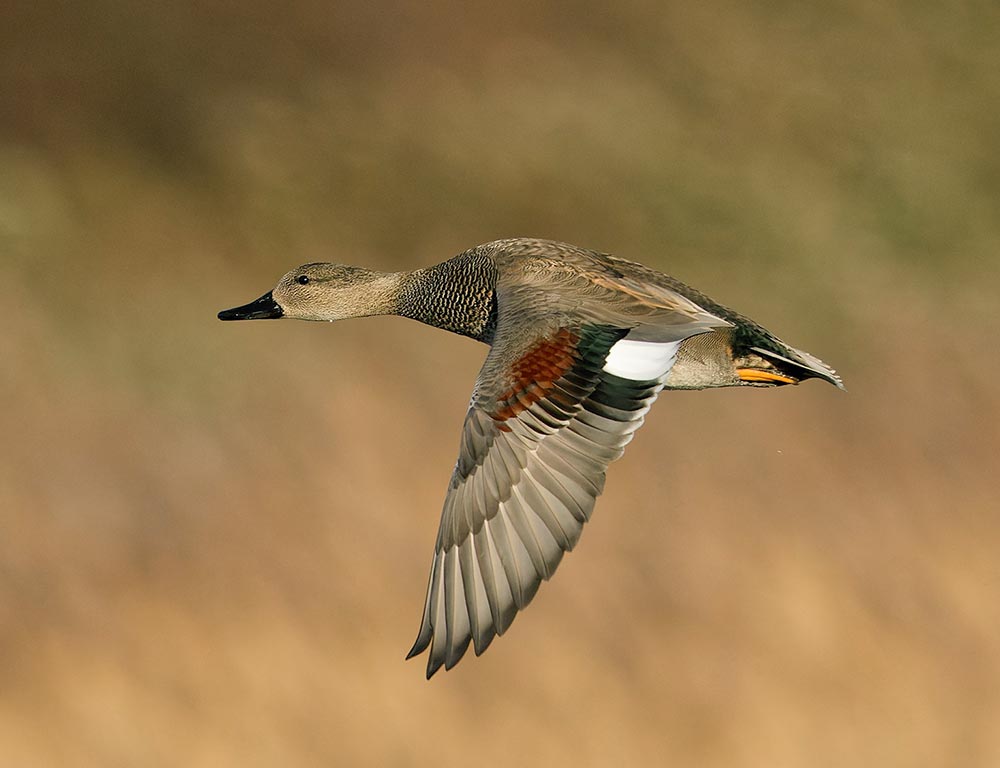
- Scientific Name: Mareca strepera
- Size: 18-22 inches
- Weight: 2 pounds
- Wingspan: 2.1-2.3 feet
- Population: Stable
- Life Span: 10 years
- Status: Least Concern
Gadwalls, recognized by their subtle yet elegant appearance, are found in various wetland habitats in Arizona.
Their diet includes seeds, aquatic plants, and insects. Gadwalls have a stable population, and their average lifespan is around 10 years.
Currently listed as a species of Least Concern, they play a vital role in maintaining the ecological balance of their habitats.
4. Mallard
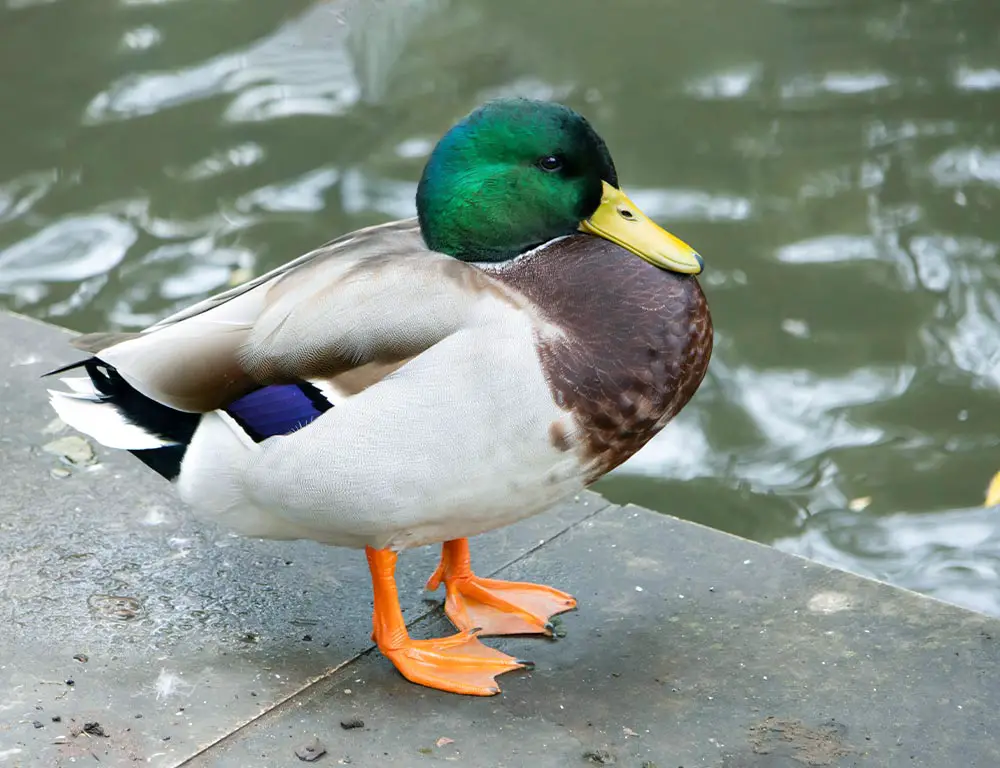
- Scientific Name: Anas platyrhynchos
- Size: 20-28 inches
- Weight: 2-3 pounds
- Wingspan: 2.5-3 feet
- Population: Abundant
- Life Span: 5-10 years
- Status: Least Concern
The Mallard, one of the most recognizable ducks globally, is also prevalent in Arizona.
With a varied diet comprising grains, insects, and aquatic vegetation, Mallards adapt well to diverse environments. Their population is abundant, and their lifespan typically ranges from 5 to 10 years.
Classified as a species of Least Concern, Mallards are highly adaptable and frequently interact with humans in urban and suburban areas.
5. Northern Pintail

- Scientific Name: Anas acuta
- Size: 20-30 inches
- Weight: 1.5-2.5 pounds
- Wingspan: 2.5-3 feet
- Population: Declining
- Life Span: 5-10 years
- Status: Near Threatened
The Northern Pintail, known for its slender neck and distinctive long, pointed tail feathers, is a migratory duck found in Arizona’s wetlands.
Their diet consists of seeds, insects, and aquatic plants. Unfortunately, their population is declining, and they are currently classified as Near Threatened.
With a lifespan of 5-10 years, conservation efforts are crucial to ensure the survival of these elegant ducks.
6. Canvasback
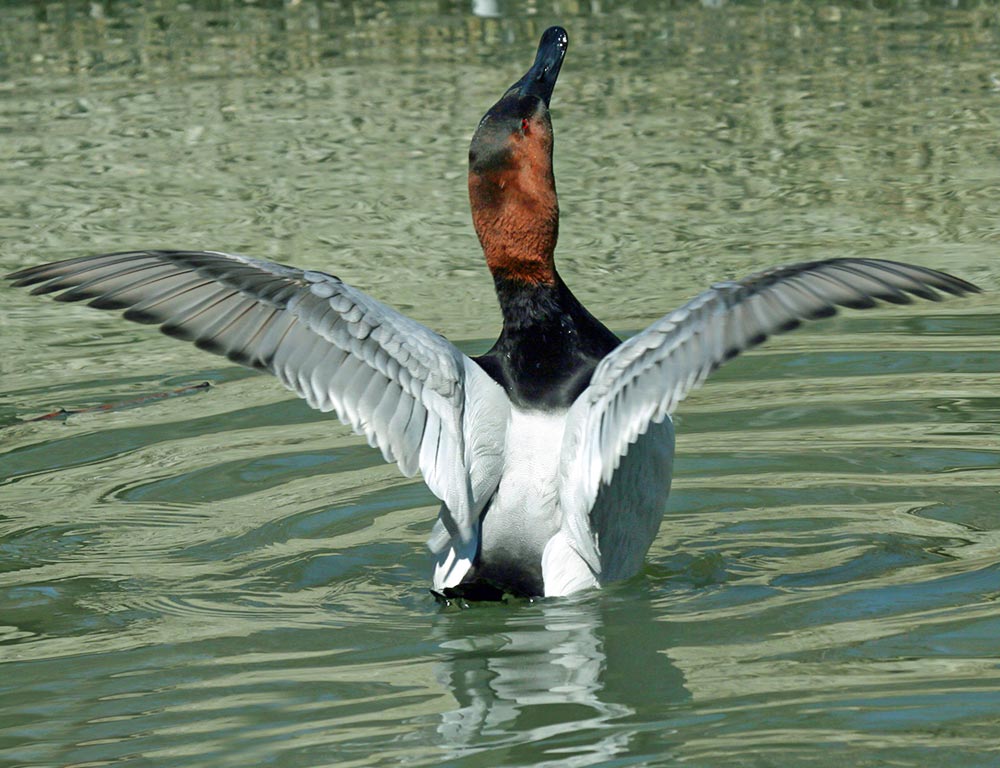
- Scientific Name: Aythya valisineria
- Size: 19-22 inches
- Weight: 2-3 pounds
- Wingspan: 2.5-2.8 feet
- Population: Stable
- Life Span: 10-15 years
- Status: Least Concern
Canvasbacks, recognized by their striking red eyes and distinctive sloping profile, inhabit Arizona’s freshwater lakes. Their diet primarily consists of aquatic plants and invertebrates.
With a stable population and a longer lifespan ranging from 10 to 15 years, Canvasbacks are currently labeled as a species of Least Concern, contributing to the biodiversity of their habitats.
7. Lesser Scaup

- Scientific Name: Aythya affinis
- Size: 14-18 inches
- Weight: 1-2 pounds
- Wingspan: 2.3-2.8 feet
- Population: Declining
- Life Span: 5-10 years
- Status: Near Threatened
The Lesser Scaup, a small diving duck, is identified by its glossy purple head and yellow eyes.
They frequent lakes and ponds in Arizona, feeding on aquatic invertebrates and plant matter.
Unfortunately, their population is declining and is listed as Near Threatened. With a lifespan of 5-10 years, conservation efforts are essential to safeguard these ducks and their habitats.
8. Northern Shoveler

- Scientific Name: Anas clypeata
- Size: 17-20 inches
- Weight: 1-2 pounds
- Wingspan: 2.5-2.8 feet
- Population: Stable
- Life Span: 3-5 years
- Status: Least Concern
Northern Shovelers, recognizable by their large spatula-shaped bills, inhabit Arizona’s wetlands and shallow waters. Their diet includes aquatic invertebrates and seeds.
With a stable population and a relatively shorter lifespan of 3-5 years, Northern Shovelers are currently classified as a species of Least Concern, contributing to the diversity of waterfowl in the region.
9. Redhead
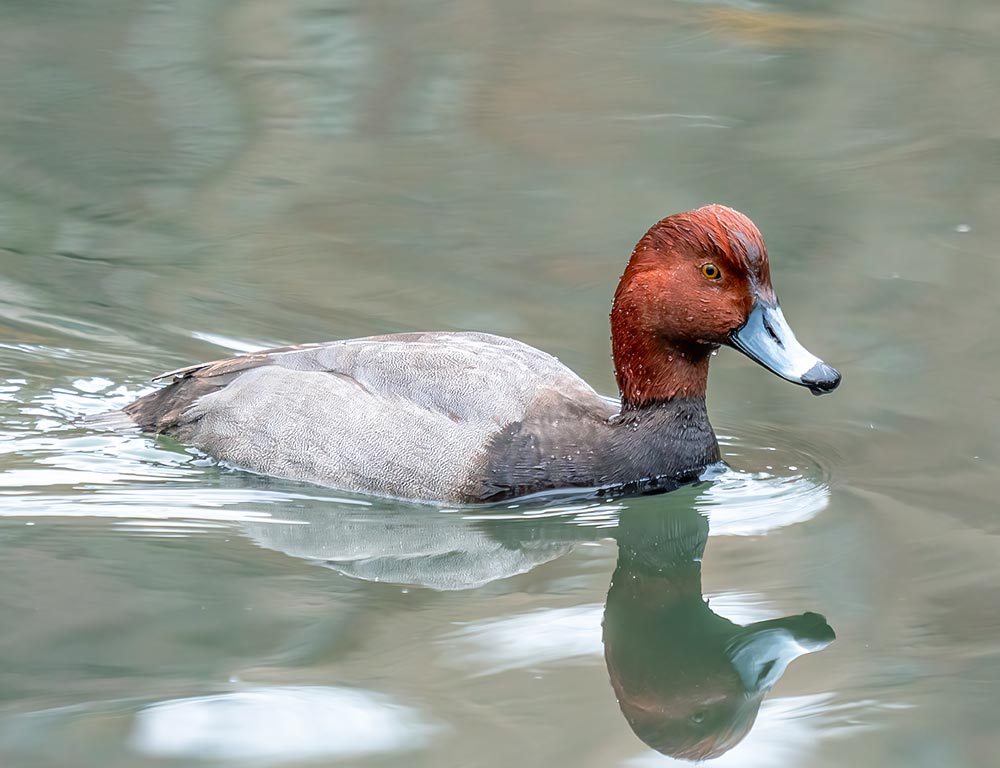
- Scientific Name: Aythya Americana
- Size: 16-22 inches
- Weight: 2-3 pounds
- Wingspan: 2.5-2.8 feet
- Population: Stable
- Life Span: 10-15 years
- Status: Least Concern
The Redhead, with its distinctive red head and gray body, is a diving duck commonly found in Arizona’s lakes and ponds. Their diet includes aquatic plants, seeds, and invertebrates.
With a stable population and a lifespan ranging from 10 to 15 years, Redheads are currently categorized as a species of Least Concern, contributing to the diverse waterfowl species in the region.
10. Black-bellied Whistling Duck
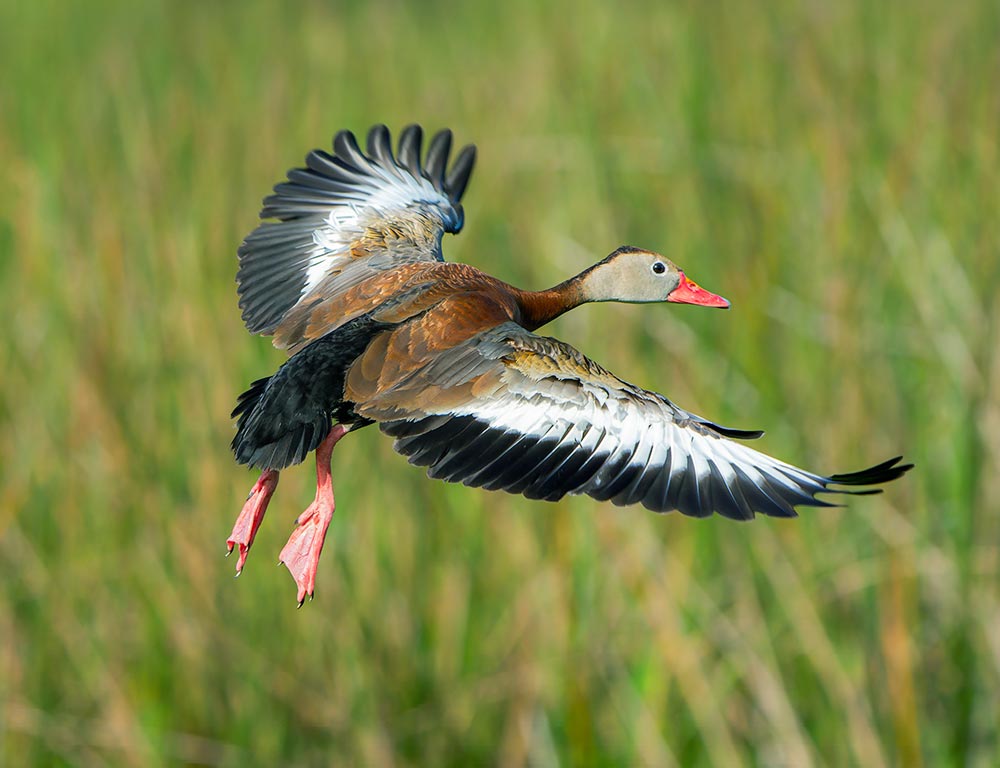
- Scientific Name: Dendrocygna autumnalis
- Size: 18-24 inches
- Weight: 1-2 pounds
- Wingspan: 2.5-3 feet
- Population: Increasing
- Life Span: 6-8 years
- Status: Least Concern
The Black-bellied Whistling Duck is easily identified by its striking appearance, including a bright pink bill and distinctive black belly.
Found in Arizona’s wetlands, they primarily feed on aquatic plants and insects.
With an increasing population and a lifespan of 6-8 years, these ducks are currently labeled as a species of Least Concern, showcasing their adaptability to various environments.
11. Wood Duck
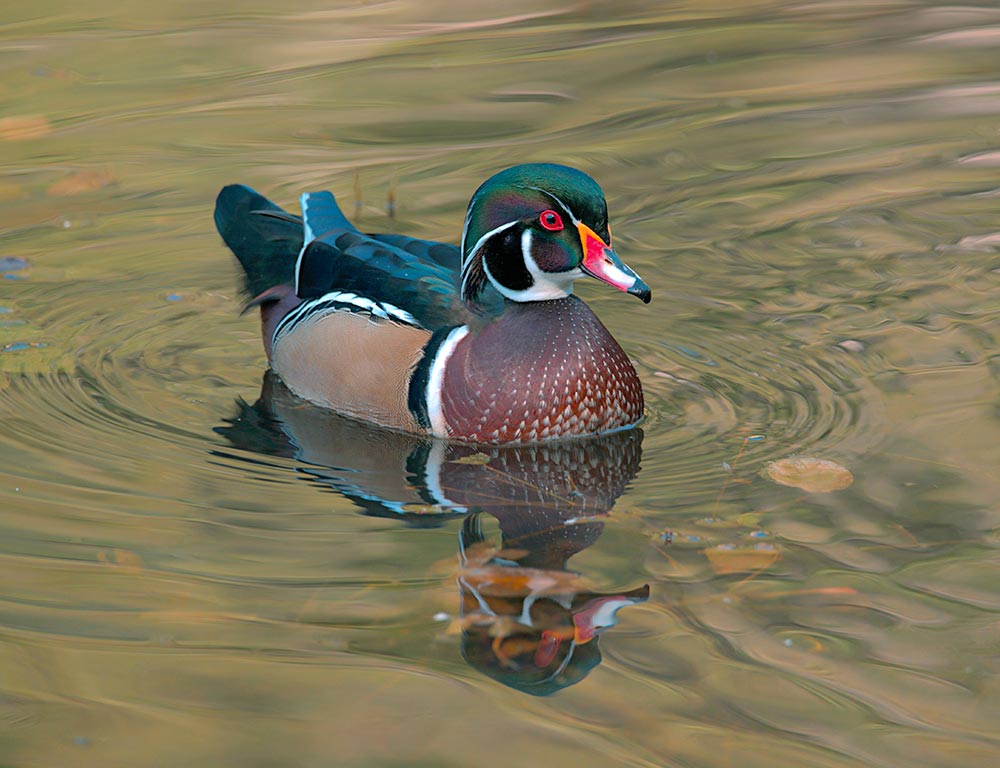
- Scientific Name: Aix sponsa
- Size: 17-21 inches
- Weight: 1-2 pounds
- Wingspan: 2-2.5 feet
- Population: Stable
- Life Span: 5-10 years
- Status: Least Concern
The Wood Duck, celebrated for its vibrant iridescent plumage, is a cavity-nesting duck often found in wooded habitats and ponds in Arizona. Their diet consists of seeds, insects, and aquatic vegetation.
With a stable population and a lifespan ranging from 5 to 10 years, Wood Ducks are currently classified as a species of Least Concern, contributing to the diversity of waterfowl in their habitats.
12. Bufflehead
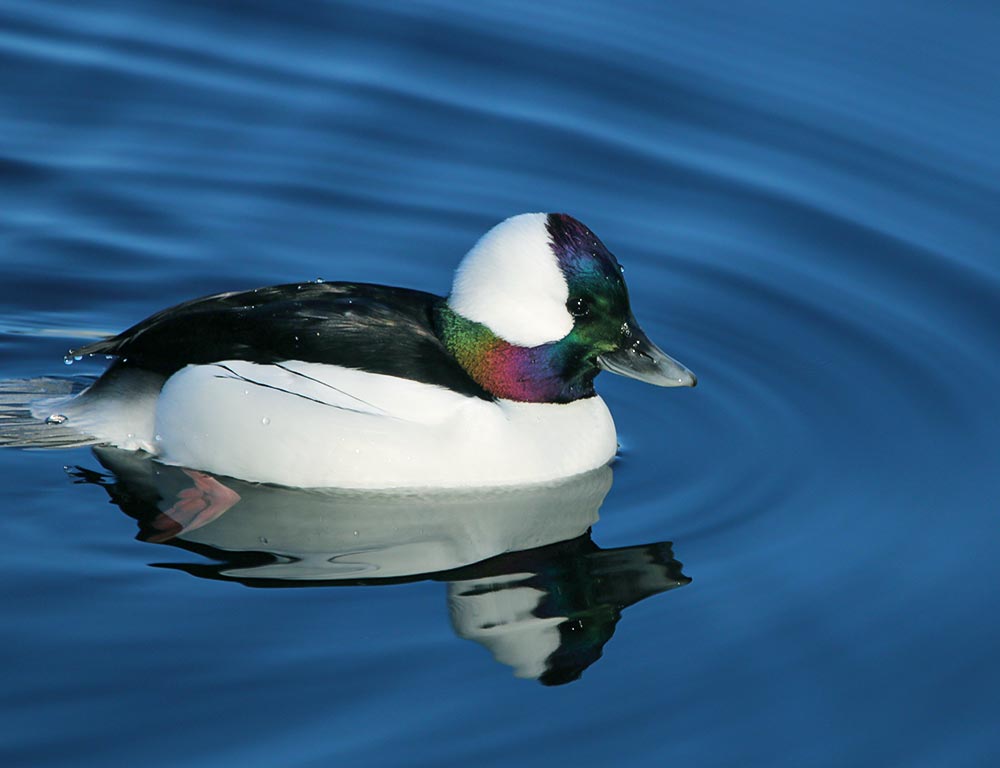
- Scientific Name: Bucephala albeola
- Size: 12-16 inches
- Weight: 1-2 pounds
- Wingspan: 1.5-1.9 feet
- Population: Stable
- Life Span: 5-10 years
- Status: Least Concern
The Bufflehead, a small and agile diving duck, frequents Arizona’s lakes and rivers during the winter months.
Identified by its striking black and white plumage, Buffleheads feed on aquatic invertebrates and small fish.
With a stable population and a lifespan ranging from 5 to 10 years, these ducks are currently classified as a species of Least Concern, contributing to the rich tapestry of waterfowl in the region.
13. Ruddy Duck
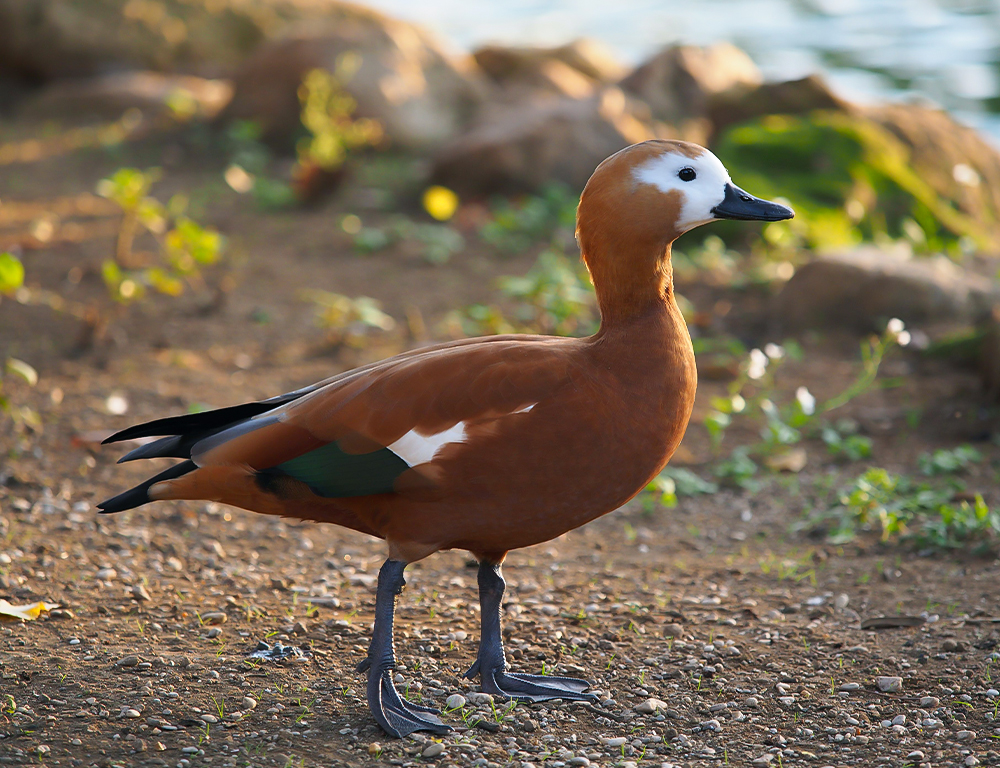
- Scientific Name: Oxyura jamaicensis
- Size: 13-18 inches
- Weight: 1-2 pounds
- Wingspan: 2 feet
- Population: Stable
- Life Span: 2-3 years
- Status: Least Concern
The Ruddy Duck, with its distinctive blue bill and stiff tail feathers, is a small diving duck commonly found in Arizona’s lakes and ponds. Their diet includes aquatic invertebrates and seeds.
With a stable population and a relatively short lifespan of 2-3 years, Ruddy Ducks are currently classified as a species of Least Concern, contributing to the diverse waterfowl population in the region.
14. Common Goldeneye
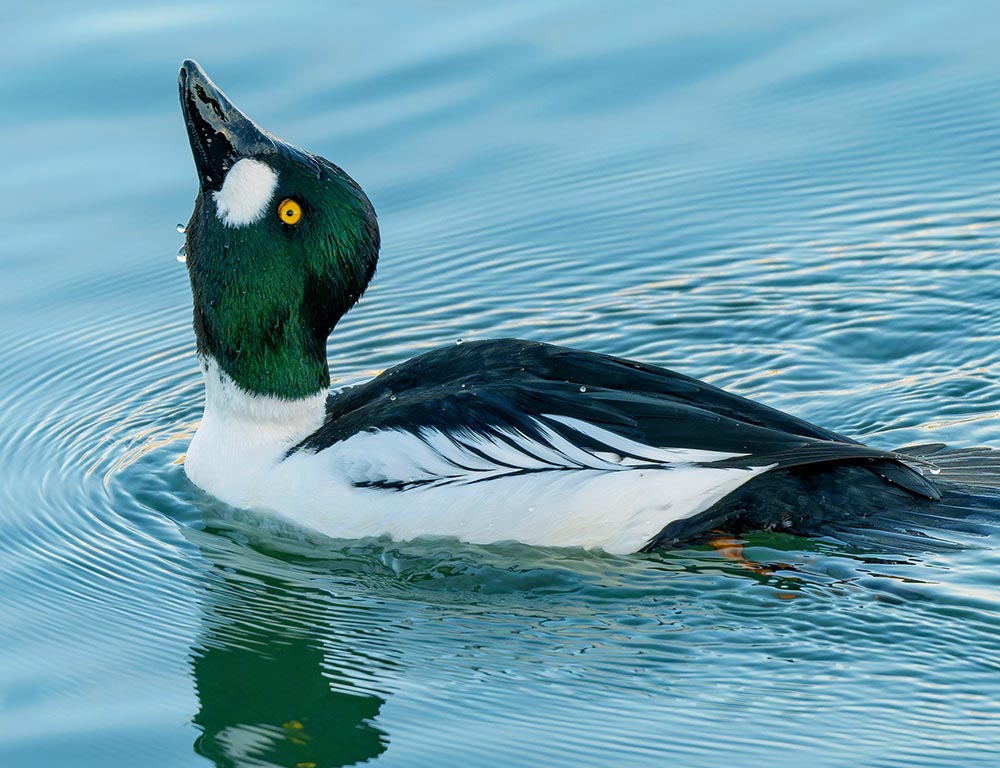
- Scientific Name: Bucephala clangula
- Size: 18-22 inches
- Weight: 2-3 pounds
- Wingspan: 2-2.4 feet
- Population: Stable
- Life Span: 10-15 years
- Status: Least Concern
The Common Goldeneye, recognized by its striking yellow eye and black and white plumage, is a diving duck that frequents Arizona’s freshwater lakes.
Their diet includes fish, aquatic insects, and crustaceans.
With a stable population and a longer lifespan ranging from 10 to 15 years, Common Goldeneyes are currently classified as a species of Least Concern, contributing to the diversity of waterfowl in the region.
15. Common Merganser
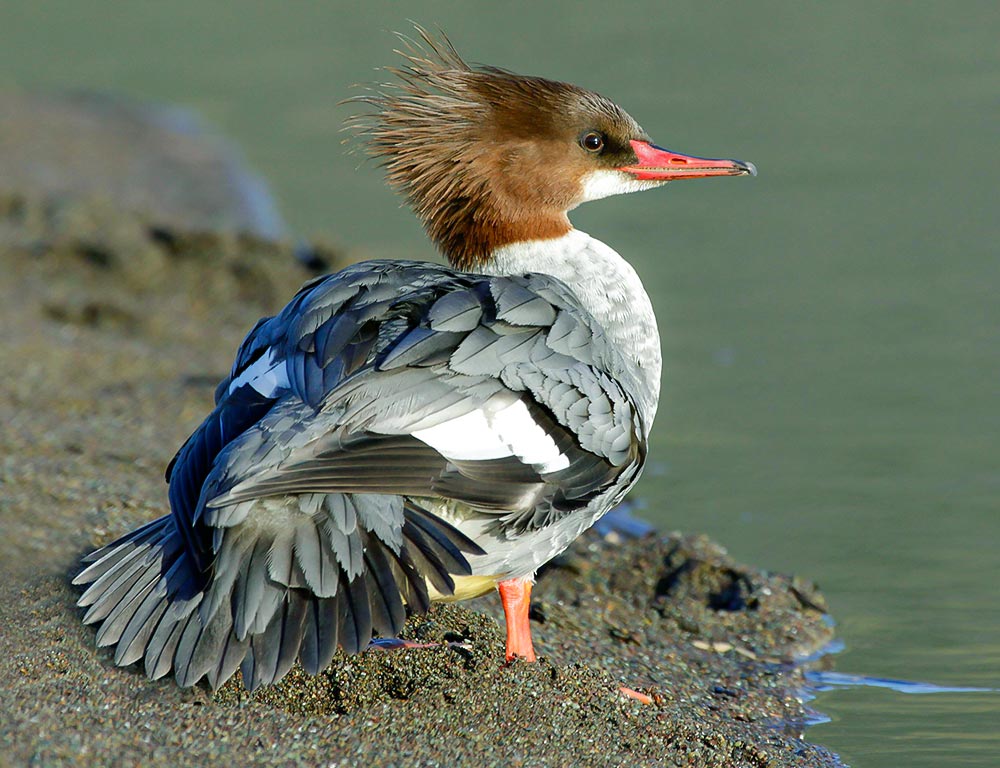
- Scientific Name: Mergus merganser
- Size: 22-28 inches
- Weight: 2-5 pounds
- Wingspan: 2.3-2.9 feet
- Population: Stable
- Life Span: 10-15 years
- Status: Least Concern
The Common Merganser, characterized by its long, slender body and serrated bill, is a large diving duck found in Arizona’s rivers and lakes.
Their diet consists mainly of fish and aquatic invertebrates.
With a stable population and a lifespan ranging from 10 to 15 years, Common Mergansers are currently classified as a species of Least Concern, playing a vital role in the aquatic ecosystems they inhabit.
16. Mexican Duck
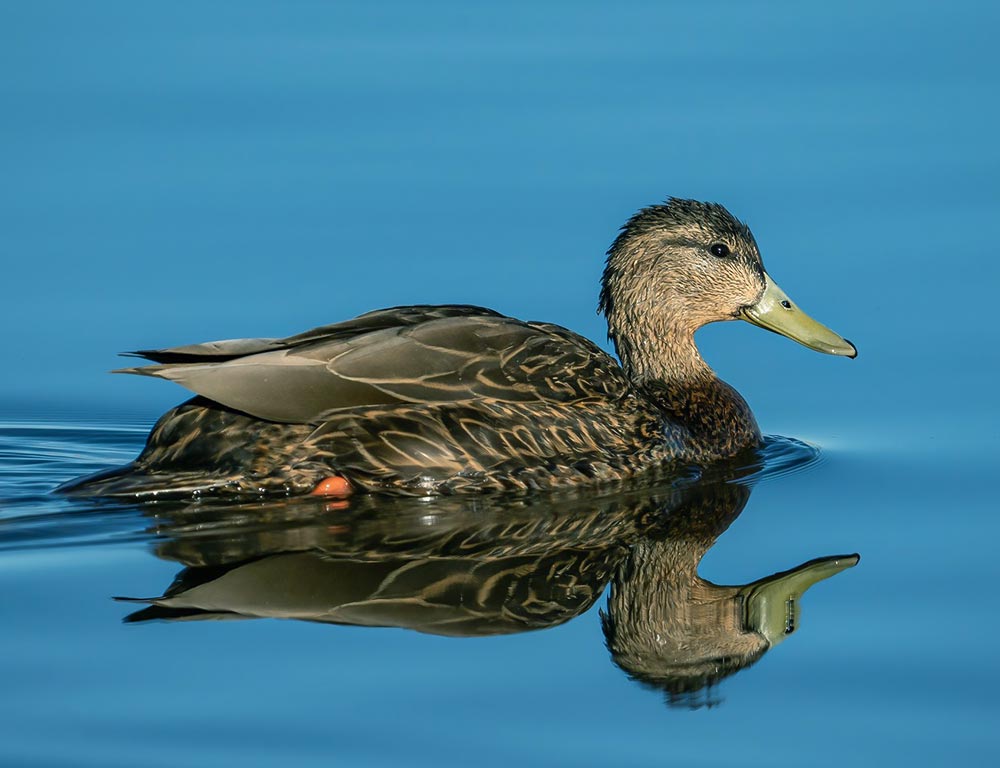
- Scientific Name: Anas diazi
- Size: 18-20 inches
- Weight: 1-2 pounds
- Wingspan: 2.5-2.8 feet
- Population: Declining
- Life Span: 5-10 years
- Status: Near Threatened
The Mexican Duck, a subspecies of the Mallard, is native to the southwestern United States, including Arizona.
They inhabit various wetland habitats and feed on a diet of seeds, aquatic plants, and small invertebrates.
Unfortunately, their population is declining, and they are classified as Near Threatened.
With a lifespan of 5-10 years, conservation efforts are crucial to protect the Mexican Duck and its unique genetic diversity.
Wrapping Up
Ducks thrive in Arizona’s watery havens, contributing to the intricate ecological web. Their roles in nutrient cycling and pest control underscore the importance of preserving these habitats.
Conservation initiatives must continue to safeguard these feathered residents, ensuring a harmonious coexistence within the state’s diverse ecosystems.
As guardians of biodiversity, ducks in Arizona stand as ambassadors for the delicate balance between wildlife and their habitats. Thank you so much.